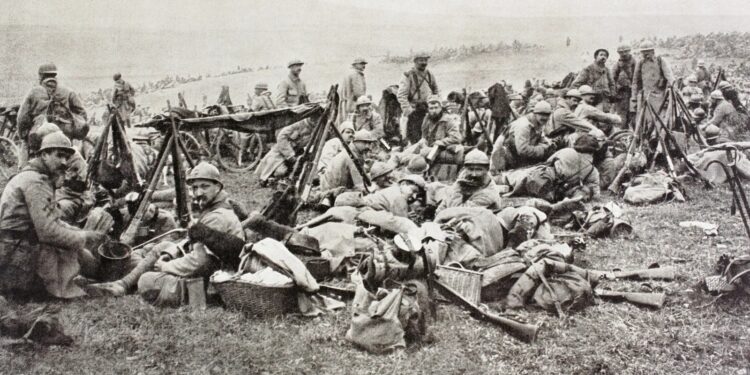The Battle of Verdun stands as one of the most devastating engagements in military history, lasting from February 21 to December 18, 1916. This grueling conflict between German and French forces became the longest continuous battle of World War I, earning the grim nickname “The Meat Grinder” due to its unprecedented casualty rate.
The German Chief of Staff, Erich von Falkenhayn, chose Verdun as his target for a strategic reason: its historical significance to the French people. The city’s network of fortifications had protected France’s eastern border for centuries. Falkenhayn believed that France would commit endless resources to defend this symbolic stronghold, leading to what he called a strategy of “bleeding France white.”
The battle began with an intense German artillery bombardment, featuring over 1,400 guns that fired nearly two million shells in the first 24 hours alone. The initial German advance captured key positions, including Fort Douaumont, the largest and highest fort protecting Verdun. However, the French resistance, led by General Philippe Pétain, proved more resilient than expected.
Pétain organized an efficient system of troop rotation and supply lines, famously declaring “They shall not pass” (“Ils ne passeront pas”). His innovative “noria” system ensured that fresh troops regularly replaced exhausted soldiers, while a dedicated supply road known as the “Sacred Way” (Voie Sacrée) kept the French forces equipped despite constant German bombardment.
The battle devolved into a war of attrition, with both sides launching countless attacks and counterattacks over the same devastated terrain. The environment became apocalyptic – forests were reduced to splinters, villages were completely obliterated, and the landscape was transformed into a cratered moonscape filled with mud, bodies, and unexploded ordnance.
By the battle’s end, both armies had suffered horrific losses. The French sustained approximately 377,000 casualties, while German losses numbered around 337,000. These staggering figures represented a combined average of 70,000 casualties per month throughout the battle.
The Battle of Verdun ultimately ended in a French victory, though at an enormous cost. The German army never achieved its objective of “bleeding France white,” and instead, both nations were severely weakened. The battle’s outcome contributed significantly to the growing war weariness in both countries and left an indelible mark on the collective memory of the French nation.
Today, the battlefield serves as a solemn reminder of the war’s brutality. The Douaumont Ossuary contains the remains of unknown soldiers from both sides, while the preserved battlefields and fortifications continue to bear witness to one of history’s most brutal military engagements.
newshub



Recent Comments